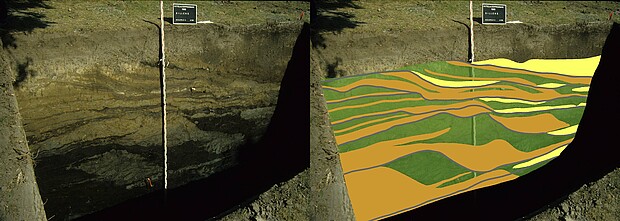Dwelling mounds and beach ridges in northern Butjadingen
The coastal fringe of Butjadingen is one of the youngest landscapes in Germany. The region has been densely populated since Roman times at the latest. It is characterised by a progradation of the coastline, which mainly took place in the first half of the 1st millenium. Sediment deposition at the exposed northern tip of Butjadingen caused the beach riges to move northwards, gradually creating new settlement areas. The people of the Roman Empire benefited from the connection to the River Weser and the young, calcareous marshes, which they settled and gradually exploited, following the seaward shifting coastline. Initially, flat settlements were founded, which were later replaced by dwelling mounds (Wurten). To this day, the dwelling mounds situated on the beach ridges characterise the landscape of the region. It was not until the Middle Ages that the natural development of the landscape was stopped by the construction of a closed coastal dikeline. Many of the dwelling mounds dating from the Roman Imperial period in the diked area are still well preserved and located in agricultural areas. The region is therefore an ideal study area for analysing the interactions between settlement development and the landscape. The project plans to re-evaluate all available settlement archaeological and landscape genetic data, as well as to conduct extensive field campaigns with associated laboratory analyses, which should provide new insights into human-environment interactions.
The interdisciplinary project is funded by the German Research Foundation and will run from September 2023 to August 2026. The fieldwork will be carried out in cooperation with the Working Group of Prof. Dr. Andreas Vött of the Department of Geomorphology at the University of Mainz. Project staff are Thorsten Becker, M.A. for archaeology and Kira Raith, M.Sc. for geosciences.


